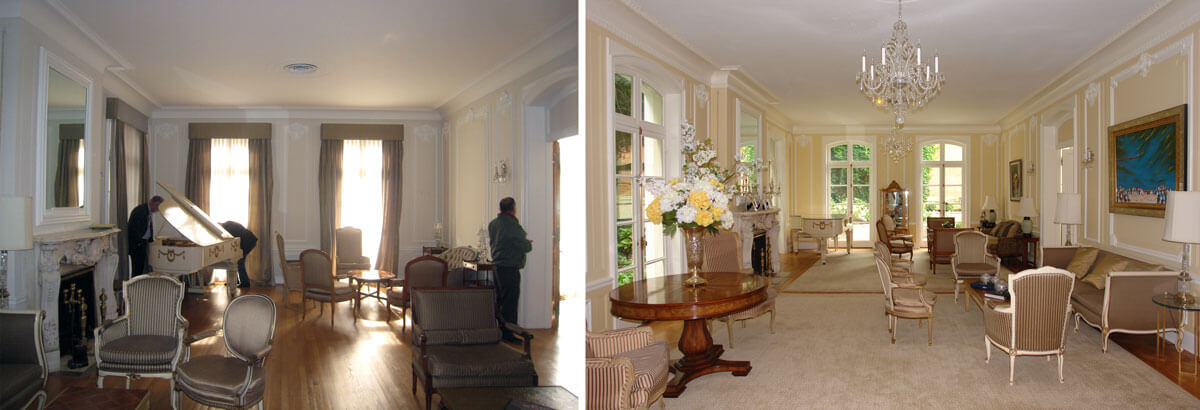- April 01, 2014
- By Karen Shih ’09
While other girls were having tea parties in their dollhouses, Katie Irwin ’99, M. Arch. ’01 was fashioning lamps, framed images and furniture, and designing additions.
Today, Irwin’s moved on to massive houses: embassies and ambassador’s residences as large as 25,000 square feet throughout Washington, D.C., as well as other iconic buildings like DAR Constitutional Hall and the National Academy of Sciences.
“I want to preserve these homes that have really stood the test of time,” says Irwin, who works at Quinn Evans Architects. “There’s a real physical connection to history. How can we make these last another 100 or 200 years? How can we make them more adaptable and usable for today?”

Irwin grew up in New Jersey, and her parents and grandparents frequently took her into New York City and up to New England to visit historic museums, houses and more. The Gilded Age mansions of Newport, R.I., particularly struck her.
“It was just mind-blowing, the wealth that was there,” she says.
She came to UMD because she could earn degrees in both art history and architecture in four years. She traveled extensively as an undergraduate and graduate student, studying and interning in France, England, Italy, Egypt, China and Croatia.
“It was very eye-opening, culturally,” Irwin says. “It made me more adaptable.”
That’s a skill she’s needed working with ambassadors and other representatives from countries including Japan, Iraq, Belgium (residence pictured at top), Australia and Ecuador. Residences are the most challenging: She has to juggle the needs of the ambassador, who will live there (and that person may change over the course of the project); the staff, which works there and organizes dinners and events for dignitaries; and the country’s financial officers, who hold the purse strings.
Money can be a sensitive issue. Irwin recalls once talking to a staff member for the Ecuadorian ambassador about adding a large exterior door at the residence.
“You could get a whole apartment at home with that money,” she recalls the staff member telling her.

On the other hand, sometimes the ambassadors are personally wealthy and have grander tastes than their country’s budget allows. Most of the ambassadorial buildings she works on are early- to mid-20th century mansions that are 10 to 20 times the size of a typical family’s home. But the countries typically budget just $2 million to $4 million for each renovation, which may include an overhaul of the house’s heating, cooling, plumbing and lighting systems, adding handicapped accessibility and updating commercial kitchens and staff quarters—all while protecting the historically significant aspects of the house.
Countries tend to stay true to the buildings’ original architecture, bringing in just pieces of artwork to incorporate their own culture.

It’s a unique privilege to meet so many ambassadors, Irwin says. She’s particularly enjoyed working with the Ecuadorian ambassador, a Harvard-educated woman with two teenage sons, and the Belgian ambassador, an avid photographer who’s captured action shots of bucks fighting in his backyard in Georgetown.
Her newest project is across the Atlantic. She’s doing a full report on the history of a 19th-century, 67,000-square-foot private mansion in Paris that was once owned by the Rothschild family. She’s recommending treatments and creating a roadmap for future work. Though it’s been a dream opportunity for her, since she’s loved France since high school, it hasn’t all been glamorous.
“We’ve done a lot of crawling around,” she says. To fully understand how the rooms have shifted or ceiling have been lowered or lifted, she’s had to crawl into hidden corners of rooms, into nooks between walls and more.
She’s hoping this project leads to many more around the world, but she’ll always love working close to home.
“I really appreciate the beautiful buildings and overall heritage we have in D.C.,” she says. “It has such a special diversity.”
